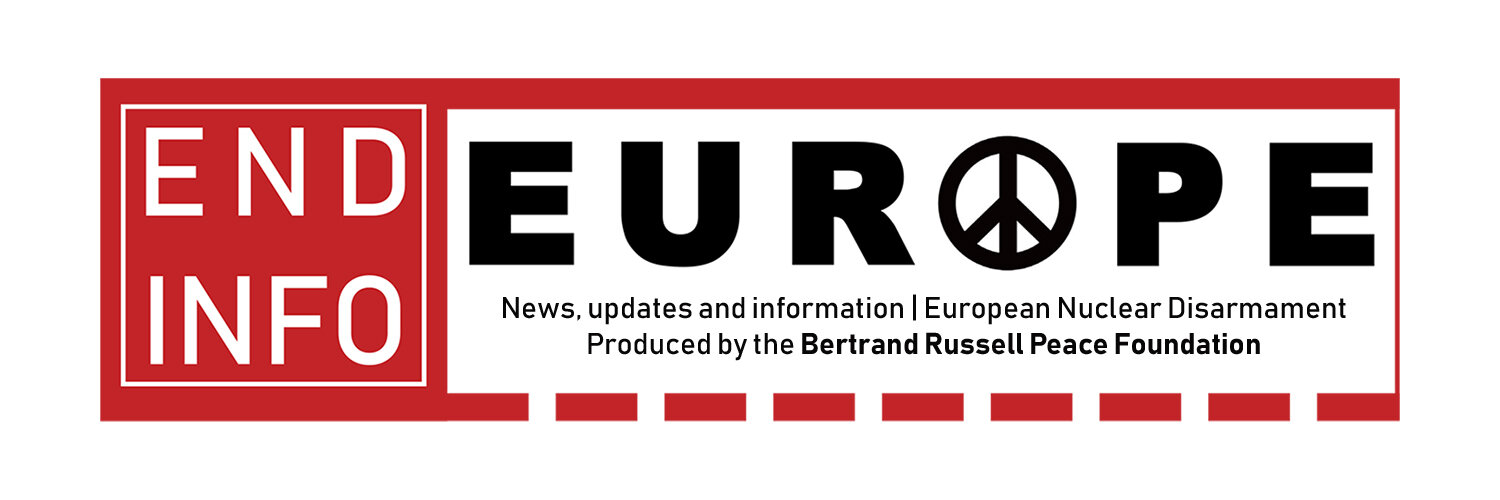Nuclear Ukraine
From END Info 30 download
Up until the dissolution of the USSR, Ukraine hosted about a third of all Soviet nuclear weapons. Following a 1991 referendum, where an overwhelming proportion voted for independence, the fate of these Soviet weapons was in the hands of the Commonwealth of Independent States. Ukraine was a ‘founder’ of the CIS but did not actually join after declining to sign the CIS Charter in 1993.
It was not until 1994 that Ukraine formally agreed to dismantle the ‘left behind’ nuclear weapons system. That same year it signed the Non-Proliferation Treaty and renounced nuclear weapons possession for good.
Nuclear weapons possession was firmly and quite rightly renounced in 1994 but nuclear power has been an enduring feature of Ukraine’s infrastructure. The risks and hazards of nuclear power have been well documented, not least in the recent Spokesman Dossier titled Nuclear Power? But the people of Ukraine have no need for book-length summaries of the potentially deadly consequences of nuclear power for in the north of the country, on the Belarus border, sits Chernobyl. Such peace-time risks have now been joined by the acute risks of nuclear power in times of war.
As Jan Vande Putte, co-author of a recent Greenpeace study, points out: “For the first time in history a major war is being waged in a country with multiple nuclear reactors and thousands of tons of highly radioactive spent fuel”.
The Greenpeace study (02/03/22) focuses on severe nuclear hazards at just one of Ukraine’s nuclear power sites: the Zaporizhzhia plant, which with six nuclear reactors is the largest such plant in the whole of Europe. The study sets out the risks:
“In a worst-case scenario, where explosions destroy the reactor containment and cooling systems, the potential release of radioactivity from both the reactor core and spent fuel pool into the atmosphere could create a disaster far worse than [at Fukushima] ... with areas of land hundreds of kilometres from the reactor site potentially becoming inhospitable for decades. Even without direct damage to the plant, the reactors rely on the electric grid for operating cooling systems, on the availability of nuclear technicians and personnel and access to heavy equipment and logistics.”
If Putin’s invasion of Ukraine and his subsequent nuclear threats weren’t bad enough - and they are very bad indeed - then the prospect of nuclear disaster, either deliberate or accidental, compounds an already awful situation.
If those who attempt to maintain some form of safety at the Chernobyl site are prevented from doing so, if supplies are cut off, if shifts cannot change or similar then Putin will have yet more death and destruction to account for. If a single shell or missile ‘accidentally’ hits just one reactor at one of the active plants then the consequences could be immense. If electricity supplies are disrupted and cooling systems fail, then nuclear-meltdown and all that means could unfold. These are risks of waging ‘conventional war’ in places with nuclear power plants. The world knows all of the risks of nuclear power but has failed to act. Will it take another ‘unthinkable’ disaster like Chernobyl to force the issue? We must hope that it doesn’t.
Meanwhile, as energy supplies are impacted as a consequence of Putin’s actions, there will be many who rush towards nuclear power as a means of ‘energy independence’. Such a rush is misjudged on many levels - not least the questions of timescale and interdependence of nuclear fuel supply - but it will be fundamentally misjudged because nuclear power is dirty, dangerous and - as can be seen from events in Ukraine - potentially deadly.

